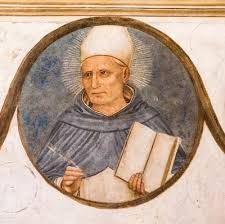
Saint Albert the Great
St. Albert the Great (aka Albertus Magnus) (ca. 1193 to November 15, 1280) St. Albert was a German Dominican bishop, theologian, philosopher, and scientist. He is famous for being the teacher of St. Thomas Aquinas. St. Albert played an important role in introducing the science of the ancient Greeks and of the Arabs into the curriculum of medieval universities. Like his contemporaries Bishop Robert Grosseteste and Roger Bacon, he emphasized in his writings the importance of an experimental approach to science. And he practiced what he preached by doing a great amount of original observational work in botany and zoology, especially in the classification of plants, flowers, and fruits; in animal reproduction and embryology; and in the study of insects. For example, he was the first to distinguish between thorns and prickles on the basis of their formation and structure, to note the influence of light and heat on the growth of trees, to establish that sap is tasteless at the root of a plant but becomes flavored as it ascends, and to discover that ants lose their sense of direction when their antennae are removed. The Dictionary of Scientific Biography calls his work On Vegetables and Plants “a masterpiece for its independence of treatment, its accuracy and range of detailed description, its freedom from myth, and its innovation in systematic classification.”
Explore Other Scientists
It is our hope that this curated set of biographies will be useful to teachers, students, and the general public.